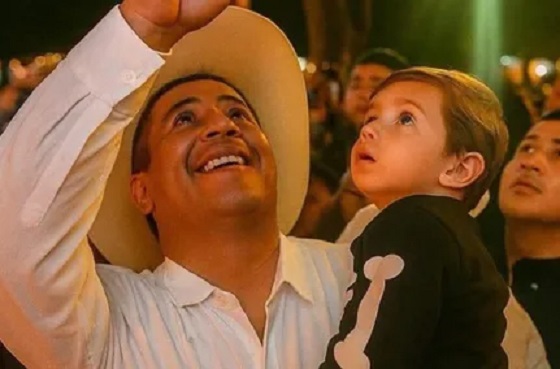Alberta
Open letter to Canada’s Premiers calling for pivot in response, end to lockdowns
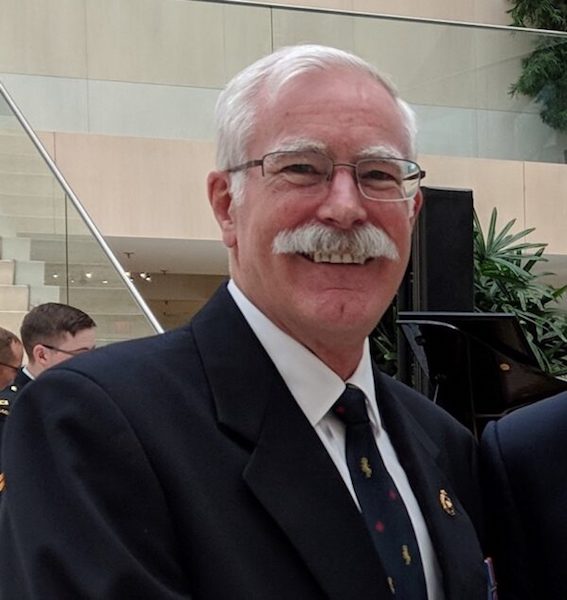
Premiers,
It has been over one full year since the declaration of the Pandemic. SARS CoV-2 has been in Canada much longer than that, as you well know.
You are responsible for the response in each of your jurisdictions. While the Medical Officers of Health (MOH) are equally responsible for the advice they have given, you personally were elected to lead. They were not.
Your own statistics prove that for people under the age of 60, SARS CoV-2 is not something to be feared. In one full year, people under the age of 60 are twice as likely to die from a heart disease. For people 20 – 40 years old, they are five times more likely to die in a car accident. Worldwide 2.54 million people die from Pneumonic annually. SARS CoV-2 has killed under 2 Million in a year. The risk from SARS CoV-2 has been widely exaggerated, by you, your MOH and the media.
https://www.frontiersin.org/articles/10.3389/fpubh.2021.625778/full
For people over 60, your approach has failed our seniors.
Canada has ranked last in the Organization of Economically Developed Countries (OECD) in care of those most at risk to SARS CoV-2. Over 96% of all reported SARS CoV-2 deaths were in our seniors. Even Canada’s Chief Medical Officer of Health admitted this is Canada’s shame.
Your use of “lockdowns” did not save over 21,000 of our seniors. It failed them.
The use of Non-Pharmaceutical Interventions (NPIs) which we now call “lockdowns” was known to have little effect on the spread of infectious diseases long before SARS CoV-2 arrived. In fact, the World Health Organization (WHO) assembled the best infectious disease doctors in the world to write the 2019 version of “Non-Pharmaceutical Public Health Measures”. If you read the document, for a Pandemic of the severity of SARS CoV-2, most of these measures were not recommended for use. Yet we used almost all of them.
https://apps.who.int/iris/bitstream/handle/10665/329438/9789241516839-eng.pdf
Top infectious disease doctors in the world have proven in repeated detail peer reviewed research papers all over again that “lockdowns” do not have significant impacts on either the spread or deaths for SARS CoV-2. Yet you and the media constantly tell us they do. But one of the many in depth studies found: “While small benefits cannot be excluded, we do not find significant benefits on case growth of more restrictive NPIs. Similar reductions in case growth may be achievable with less‐restrictive interventions”.
https://onlinelibrary.wiley.com/doi/10.1111/eci.13484
What is also know is that “lockdowns” cause terrible collateral damage. The damage to Canadians Mental Health, Societal Health, Children’s Education and Social Development, Patients with other Severe Illnesses and to our National Economy (Federal and Provincial/Territorial) will continue, until you remove and promise never to inflict “lockdowns again. These impacts and deaths seem not to be considered in any cost benefit analysis by you or your MOH.
Many of the world’s experts have tried to help target the response to SARS CoV-2 to save the most vulnerable, while minimizing the effects on the rest of our population. You have ignored these experts. In fact, most of these experts have been completely censored by you, your MOH and the media.
Please read the attached Paper, “One Year of COVID-19 Pandemic Response in Canada”. The Paper states what we had collectively planned to do in a Pandemic, what we have done, and how to pivot out of our failed response.
It is time to stop.
Listen to all expert voices.
Pivot.
Thank you for your time.
David Redman
Lieutenant Colonel (Retired)
Former Head of Emergency Management Alberta
One Year of COVID-19 Pandemic Response in Canada March 31, 2021
David Redman
Former Head of Emergency Management Alberta
Emergency Management
Pandemics happen continuously. Since 1955, this is the world’s fifth pandemic. In the next fifty-five years there is going to be five more. We have never responded to a pandemic like we responded to COVID-19.
It must be clear that a pandemic is not a Public Health Emergency, it is a Public Emergency because all areas of society are affected: public sector, private sector, not- for-profit sector, and all citizens.
In Canada, we have an Emergency Management Process that we normally use in a pandemic. We have pre-written Pandemic Response plans. These plans were written incorporating the hard lessons learned from previous pandemics.
Part of the lessons learned from previous pandemics is contained in the World Health Organization (WHO) “Non-pharmaceutical public health measures for mitigating the risk and impact of epidemic and pandemic influenza” dated 2019.
https://apps.who.int/iris/bitstream/handle/10665/329438/9789241516839-eng.pdf
This document included the world’s best studies and information on the use of 15 separate non-pharmaceutical interventions (NPIs). The use of these NPIs was discussed in the development of the existing Provincial Plans.
The 2019 WHO document was known, or should have been known, by all Medical Officers of Health in Canada. The use of each of the NPIs was dependant on the severity of the pandemic. Even in a High or Extraordinary Pandemic the use of all or most of these NPIs at the same time was not envisioned.
Prior to the use of each NPI, the Federal and Provincial/Territorial governments needed to demonstrably justify how each NPI would protect the life of Canadians. Some of the NPIs were not recommended for use in any pandemic, including:
- Contact Tracing (not recommended after first two weeks)
- Quarantine of Exposed Individuals
- Entry and Exit Screening
- Border Closures
One Year of COVID-19 Pandemic Response in Canada March 31, 2021
David Redman
Former Head of Emergency Management Alberta
Some of the NPIs were recommended for use only as a last resort, including: • Workplace Measures and Closures
Despite this, they were used as a first resort.
Some NPIs were not recommended for a pandemic with the severity of COVID-19, including:
- School Measures and Closures
- Face Masks for Public These recommendations were ignored.The lack of any attempt to publicly demonstrate a cost benefit analysis based on life and impact on lives shows a complete disregard for “Due Diligence” by both our Medical Officers of Health (MOH) and our Premiers.
In summary on NPIs, the collateral damage from the use of each NPI needed to be justified in a cost benefit analysis, showing not only what life saving could be expected, but what the short-term and long-term impact on lives would be. Further, it needed to be demonstrably shown why the WHO recommendations were ignored. This was never done for any of the NPIs invoked.
The aim of the pre-written pandemic plans is to allow our leaders to rapidly minimize the impact of a new pandemic on our society. The four goals of the pandemic plans are clearly defined:
• Controlling the spread of influenza disease and reducing illness (morbidity) and death (mortality) by providing access to appropriate prevention measures, care, and treatment.
• Mitigating societal disruption in Alberta through ensuring the continuity and recovery of critical services.
• Minimizing adverse economic impact.
• Supporting an efficient and effective use of resources during response and recovery
https://www.alberta.ca/pandemic-influenza.aspx#toc-1
The purpose in writing these plans in advance is to ensure the government could rapidly advise the public of the scope of the new hazard and publicly issue a complete written plan to address it. That way the public can see the entire plan, see the phases of the plan, and all steps that will be taken. The public understands their role in the plan. The response to the pandemic would then be coherent.
This has not happened.
One Year of COVID-19 Pandemic Response in Canada March 31, 2021
David Redman
Former Head of Emergency Management Alberta
The Canadian Response – Not Based on Emergency Management
The Canadian response to COVID-19 has been incoherent, constantly changing, and with no plan. The sole focus on COVID-19 case counts led to a completely flawed response trying to deal only with the first pandemic goal, and failing.
In February and March 2020 we knew that over 95% of the deaths in China and Europe were in seniors, over the age of 60, with multiple co-morbidities.
One Year of COVID-19 Pandemic Response in Canada March 31, 2021
David Redman
Former Head of Emergency Management Alberta
We should have immediately developed options for the protection of concentrations of our seniors over 60 with co-morbidities. Our Long Term Care (LTC) homes should have developed and offered quarantine options, for both the residents and the staff.
In our first full year of COVID-19 in Canada, 96% of our over 22,800 deaths have been in seniors, over the age of 60, with multiple co-morbidities. See Figure 5 in link below, updated weekly by Health Canada.
https://health-infobase.canada.ca/covid-19/epidemiological-summary-covid-19- cases.html
That is over 21,890 deaths. It is likely that thousands of these deaths could have been avoided, as over 80% of the deaths in the first wave occurred in LTC homes.
After one full year, we stand at 73% of the 22,880 deaths in LTC homes, 16,700 of our seniors. Our country ranked last in the OECD for protecting our seniors.
https://www.msn.com/en-ca/news/canada/canadas-nursing-homes-have-worst-record- for-covid-deaths-among-wealthy-nations-report/ar-BB1f76sw
This may have cost $2 billion, but could have saved over 16,700 lives as 73% of Canadian deaths have been in LTC homes in the first year of COVID-19. Instead we locked down healthy Canadians and our businesses and spent well over $240 billion to force over 8 million healthy Canadians to stay at home. The cost mounts daily.
https://www.cbc.ca/news/canada/tracking-unprecedented-federal-coronavirus-spending- 1.5827045
We did not need to follow the failed lock down practice of China or Europe. Lockdowns have not saved 21,890 of our Canadian seniors. We knew who was most at risk and had time to provide the option of quarantine for our seniors, both in LTC homes and in society. Instead, we sacrificed our seniors.
https://www.cnn.com/2020/05/26/world/elderly-care-homes-coronavirus-intl/index.html

In June 2020, the Canadian Institute for Health Information reported that Canada had a higher
proportion of COVID-19 deaths within LTC settings than other OECD countries included in its
comparison. At that time, deaths in Canadian LTCs from COVID-19 were at 81% of the total, while
OECD countries reported LTC COVID-19 deaths of 10-66% (average of 38%) of their totals.
The CBC News analysis has tracked $105.66 billion in federal payments to individuals; $118.37
billion that has gone to businesses, non-profits and charitable organizations; and a further
$16.18 billion in transfers to provinces, territories, municipalities and government agencies.

One Year of COVID-19 Pandemic Response in Canada March 31, 2021
David Redman
Former Head of Emergency Management Alberta
Our leaders and doctors constantly tell us we are in danger of overwhelming our medical system. If we had acted to quarantine our seniors’ long term care facilities, our hospital capacity would not have been challenged, as 71% of our hospital beds and 64% of our ICU capacity continue to this day to be filled with seniors. See Figure 5 in link below, updated daily by Health Canada.
https://health-infobase.canada.ca/covid-19/epidemiological-summary-covid-19- cases.html
We would not have needed to stop other medical procedures.
https://lfpress.com/opinion/columnists/goldstein-canadas-medical-wait-times-longest- ever-because-of-covid-19
We should never have forced healthy medical staff to self-isolate. We should have made rapid testing a priority for all orders of government.
We ignored the other three goals of our pre-existing pandemic plans:
• Mitigating societal disruption in Alberta through ensuring the continuity and recovery of critical services.
• Minimizing adverse economic impact.
• Supporting an efficient and effective use of resources during response and recovery
Ignoring these three goals and following a failed lockdown response has caused massive collateral damage in terms of deaths and long-term effects on our population. Collateral damage, largely ignored by mainstream media, includes but is not limited to:
- Societal health,
- Mental health,
- Other health conditions,
- Children’s education and social development,
- Economic healthhttps://pandemicalternative.org/ https://collateralglobal.org/
We are told that lockdowns (i.e. the persistent use of NPIs) has decreased the spread and deaths from COVID-19. Therefore, it is assumed that the collateral deaths are somehow justified. Nothing could be further from the truth.



One Year of COVID-19 Pandemic Response in Canada March 31, 2021
David Redman
Former Head of Emergency Management Alberta
We knew from the WHO 2019 NPI document cited earlier that the use of most NPIs have little effect on the spread of a virus. It was a lesson learned. Unfortunately, it had to be proved again through studies by some of the best infectious disease doctors in the world. One such study on the spread of COVID-19 is quoted:
“European Journal of Clinical Investigation
Assessing mandatory stay‐at‐home and business closure effects on the spread of
COVID‐19
Methods
We first estimate COVID‐19 case growth in relation to any NPI implementation in subnational regions of 10 countries: England, France, Germany, Iran, Italy, Netherlands, Spain, South Korea, Sweden and the United States. Using first‐difference models with fixed effects, we isolate the effects of mrNPIs by subtracting the combined effects of lrNPIs and epidemic dynamics from all NPIs. We use case growth in Sweden and South Korea, 2 countries that did not implement mandatory stay‐at‐home and business closures, as comparison countries for the other 8 countries (16 total comparisons).
Conclusions
While small benefits cannot be excluded, we do not find significant benefits on case growth of more restrictive NPIs. Similar reductions in case growth may be achievable with less‐restrictive interventions.”
https://onlinelibrary.wiley.com/doi/10.1111/eci.13484
Further comment on deaths from COVID-19 and non-lockdown countries compared to lockdown countries:
https://off-guardian.org/2021/03/23/lockdown-one-year-on-it-doesnt-work-it-never- worked-it-wasnt-supposed-to-work/
COVID-19 has followed the annual seasonal infection curve almost exactly, in spite of lockdowns in our country. Our MOH and Premiers take credit for the seasons when it is in their favour and blame their citizens when seasons dictate “exponential increases”. Our Premiers and MOHs continue to abandon our Emergency Management Process and give in to fear.

One Year of COVID-19 Pandemic Response in Canada March 31, 2021
David Redman
Former Head of Emergency Management Alberta
Conclusions – An Emergency Management and Science Based Way Ahead
Canadians deserve a confidence-based response to the COVID-19 pandemic and all future pandemics. An eight-point process is proposed for the immediate future:
|
1. Releaseacomprehensive,FourGoal-basedPandemicPlan,showingwhatis to be done phase by phase, and what the public’s role is in each phase. |
|
One Year of COVID-19 Pandemic Response in Canada March 31, 2021
David Redman
Former Head of Emergency Management Alberta
7. Geteveryoneunder65withoutpre-existingcompromisedimmune systems, who can and want to work, fully back to work.
8. Continuetovaccinateassafeandeffectivevaccinesbecomeavailable,for the current strain of COVID-19.
Canada’s Response to COVID-19 After One Year
Alberta
Alberta government’s plan will improve access to MRIs and CT scans

From the Fraser Institute
By Nadeem Esmail and Tegan Hill
The Smith government may soon allow Albertans to privately purchase diagnostic screening and testing services, prompting familiar cries from defenders of the status quo. But in reality, this change, which the government plans to propose in the legislature in the coming months, would simply give Albertans an option already available to patients in every other developed country with universal health care.
It’s important for Albertans and indeed all Canadians to understand the unique nature of our health-care system. In every one of the 30 other developed countries with universal health care, patients are free to seek care on their own terms with their own resources when the universal system is unwilling or unable to satisfy their needs. Whether to access care with shorter wait times and a more rapid return to full health, to access more personalized services or meet a personal health need, or to access new advances in medical technology. But not in Canada.
That prohibition has not served Albertans well. Despite being one of the highest-spending provinces in one of the most expensive universal health-care systems in the developed world, Albertans endure some of the longest wait times for health care and some of the worst availability of advanced diagnostic and medical technologies including MRI machines and CT scanners.
Introducing new medical technologies is a costly endeavour, which requires money and the actual equipment, but also the proficiency, knowledge and expertise to use it properly. By allowing Albertans to privately purchase diagnostic screening and testing services, the Smith government would encourage private providers to make these technologies available and develop the requisite knowledge.
Obviously, these new providers would improve access to these services for all Alberta patients—first for those willing to pay for them, and then for patients in the public system. In other words, adding providers to the health-care system expands the supply of these services, which will reduce wait times for everyone, not just those using private clinics. And relief can’t come soon enough. In Alberta, in 2024 the median wait time for a CT scan was 12 weeks and 24 weeks for an MRI.
Greater access and shorter wait times will also benefit Albertans concerned about their future health or preventative care. When these Albertans can quickly access a private provider, their appointments may lead to the early discovery of medical problems. Early detection can improve health outcomes and reduce the amount of public health-care resources these Albertans may ultimately use in the future. And that means more resources available for all other patients, to the benefit of all Albertans including those unable to access the private option.
Opponents of this approach argue that it’s a move towards two-tier health care, which will drain resources from the public system, or that this is “American-style” health care. But these arguments ignore that private alternatives benefit all patients in universal health-care systems in the rest of the developed world. For example, Switzerland, Germany, the Netherlands and Australia all have higher-performing universal systems that provide more timely care because of—not despite—the private options available to patients.
In reality, the Smith government’s plan to allow Albertans to privately purchase diagnostic screening and testing services is a small step in the right direction to reduce wait times and improve health-care access in the province. In fact, the proposal doesn’t go far enough—the government should allow Albertans to purchase physician appointments and surgeries privately, too. Hopefully the Smith government continues to reform the province’s health-care system, despite ill-informed objections, with all patients in mind.
Alberta
Canada’s heavy oil finds new fans as global demand rises

From the Canadian Energy Centre
By Will Gibson
“The refining industry wants heavy oil. We are actually in a shortage of heavy oil globally right now, and you can see that in the prices”
Once priced at a steep discount to its lighter, sweeter counterparts, Canadian oil has earned growing admiration—and market share—among new customers in Asia.
Canada’s oil exports are primarily “heavy” oil from the Alberta oil sands, compared to oil from more conventional “light” plays like the Permian Basin in the U.S.
One way to think of it is that heavy oil is thick and does not flow easily, while light oil is thin and flows freely, like fudge compared to apple juice.
“The refining industry wants heavy oil. We are actually in a shortage of heavy oil globally right now, and you can see that in the prices,” said Susan Bell, senior vice-president of downstream research with Rystad Energy.
A narrowing price gap
Alberta’s heavy oil producers generally receive a lower price than light oil producers, partly a result of different crude quality but mainly because of the cost of transportation, according to S&P Global.
The “differential” between Western Canadian Select (WCS) and West Texas Intermediate (WTI) blew out to nearly US$50 per barrel in 2018 because of pipeline bottlenecks, forcing Alberta to step in and cut production.
So far this year, the differential has narrowed to as little as US$10 per barrel, averaging around US$12, according to GLJ Petroleum Consultants.
“The differential between WCS and WTI is the narrowest I’ve seen in three decades working in the industry,” Bell said.
Trans Mountain Expansion opens the door to Asia

Oil tanker docked at the Westridge Marine Terminal in Burnaby, B.C. Photo courtesy Trans Mountain Corporation
The price boost is thanks to the Trans Mountain expansion, which opened a new gateway to Asia in May 2024 by nearly tripling the pipeline’s capacity.
This helps fill the supply void left by other major regions that export heavy oil – Venezuela and Mexico – where production is declining or unsteady.
Canadian oil exports outside the United States reached a record 525,000 barrels per day in July 2025, the latest month of data available from the Canada Energy Regulator.
China leads Asian buyers since the expansion went into service, along with Japan, Brunei and Singapore, Bloomberg reports. 
Asian refineries see opportunity in heavy oil
“What we are seeing now is a lot of refineries in the Asian market have been exposed long enough to WCS and now are comfortable with taking on regular shipments,” Bell said.
Kevin Birn, chief analyst for Canadian oil markets at S&P Global, said rising demand for heavier crude in Asia comes from refineries expanding capacity to process it and capture more value from lower-cost feedstocks.
“They’ve invested in capital improvements on the front end to convert heavier oils into more valuable refined products,” said Birn, who also heads S&P’s Center of Emissions Excellence.
Refiners in the U.S. Gulf Coast and Midwest made similar investments over the past 40 years to capitalize on supply from Latin America and the oil sands, he said.
While oil sands output has grown, supplies from Latin America have declined.
Mexico’s state oil company, Pemex, reports it produced roughly 1.6 million barrels per day in the second quarter of 2025, a steep drop from 2.3 million in 2015 and 2.6 million in 2010.
Meanwhile, Venezuela’s oil production, which was nearly 2.9 million barrels per day in 2010, was just 965,000 barrels per day this September, according to OPEC.
The case for more Canadian pipelines

Worker at an oil sands SAGD processing facility in northern Alberta. Photo courtesy Strathcona Resources
“The growth in heavy demand, and decline of other sources of heavy supply has contributed to a tighter market for heavy oil and narrower spreads,” Birn said.
Even the International Energy Agency, known for its bearish projections of future oil demand, sees rising global use of extra-heavy oil through 2050.
The chief impediments to Canada building new pipelines to meet the demand are political rather than market-based, said both Bell and Birn.
“There is absolutely a business case for a second pipeline to tidewater,” Bell said.
“The challenge is other hurdles limiting the growth in the industry, including legislation such as the tanker ban or the oil and gas emissions cap.”
A strategic choice for Canada
Because Alberta’s oil sands will continue a steady, reliable and low-cost supply of heavy oil into the future, Birn said policymakers and Canadians have options.
“Canada needs to ask itself whether to continue to expand pipeline capacity south to the United States or to access global markets itself, which would bring more competition for its products.”
-

 Justice1 day ago
Justice1 day agoCarney government lets Supreme Court decision stand despite outrage over child porn ruling
-
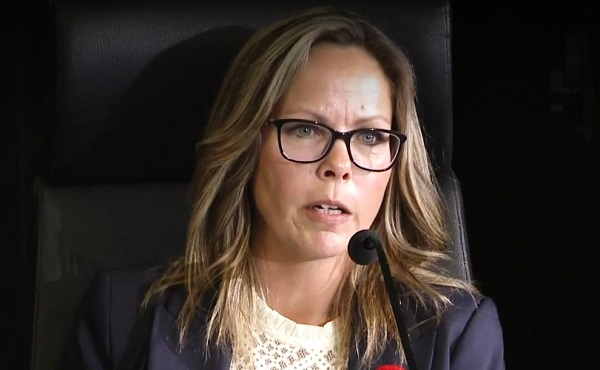
 COVID-191 day ago
COVID-191 day agoFreedom Convoy leader Tamara Lich to appeal her recent conviction
-

 Daily Caller2 days ago
Daily Caller2 days agoUS Eating Canada’s Lunch While Liberals Stall – Trump Admin Announces Record-Shattering Energy Report
-

 Business1 day ago
Business1 day agoCarney’s budget spares tax status of Canadian churches, pro-life groups after backlash
-

 Daily Caller1 day ago
Daily Caller1 day agoUN Chief Rages Against Dying Of Climate Alarm Light
-
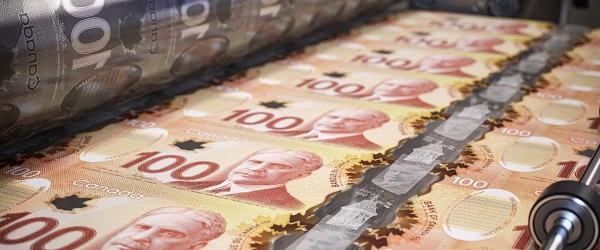
 Business2 days ago
Business2 days agoPulling back the curtain on the Carney government’s first budget
-
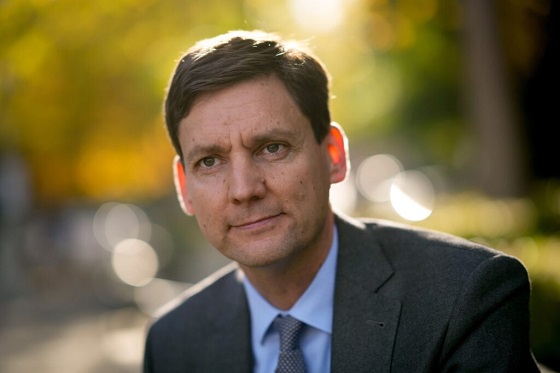
 Energy2 days ago
Energy2 days agoEby should put up, shut up, or pay up
-

 Business2 days ago
Business2 days agoThe Liberal budget is a massive FAILURE: Former Liberal Cabinet Member Dan McTeague























